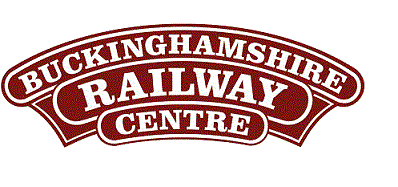
BRC Website Home
Quainton Virtual Stockbook - Non Passenger Coaching Stock
GWR 'Bloater A' No. W2115W

BRC Website Home
Quainton Virtual Stockbook - Non Passenger Coaching Stock
GWR 'Bloater A' No. W2115W

Photo: |
|
When first built, the fish vans were dual fitted for attaching to express passenger trains. They had under floor ice boxes to keep the wet fish fresh on their journey to London´s Billingsgate Market and other inland cities. Built in 1919 to Diagram S.9, and given the telegraphic code Bloater. They were designed to carry 10 tons and for ease of access, they had 3 pairs of sliding doors to each side. You can still see the fittings for the red tail lamps and six of the original iceboxes. The original design was plain, with no windows. The wagon was originally numbered AW2115W and measures 30' buffer-to-buffer. In 1956 the wagon was converted to a Staff & Tool Van for Messrs. Pooley Weighing machine contractors (now Averys), and numbered DW 150111 on lot no. 323. At this stage, the van was divided it into workshop and mess area for the men, during which time windows were added. It finally ended up at the White City Customs Shed at Parkestone Quay, Hull. The vehicle appears to have become surplus to requirements in the 1980s and was consigned to Booth's scrapyard in Rotherham in June 1987. Stations like Quainton needed many machines for weighing goods. These machines were used in the parcels office and the goods shed, and a weighbridge was used to weigh horse-drawn carts and lorries. All commercial weighing equipment needed be regularly tested and repaired. The Pooley men would visit each station to carry out this work, staying for up to a week if there were a lot of machines to check. The men´s Pooley van was a combination of messing quarters and workshop. It was placed in a convenient siding beside the railway while the men tested, certified and maintained all the weighing machines at the station and station yards. The Pooley men were regular visitors and become well known to local people. They could often be found in the ´Railway Arms´ or other tavern beside each station. When the vehicle arrived at Quainton in June 1988, it was very much worse for wear, with no roofing felt, broken windows and peeling paint. It was dried out, refelted and repaired as necessary. On scraping the layers of old paint off, a green livery was revealed, which was used as the basis for its original livery in restoration. It is currently restored in a bright red livery. This vehicle is one of two similar vehicles that survived to preservation, the other being at the Gwili Railway, number 2135, also built in 1919. |

Photo: |
| Origin :- | GWR | Date Built :- | 1919 | Number :- | W2115W |
| Diagram :- | S.9 | Lot :- | 1259 - original 323 - rebuild |
Tare Weight :- | 8½ tonnes |
| Type :- | Bloater A | Builder :- | GWR - Truro | Owner :- | QRS Members |
| Status :- | Static Exhibit External Only |
Location :- | Up Yard | Wheelbase :- | 18' |
| Accession No.: | N/A | Arrival Date :- | 1988 |
Text © Quainton Railway Society / Photographs © Quainton Railway Society or referenced photographer
Email Webmaster
Page Updated: 24 September 2017